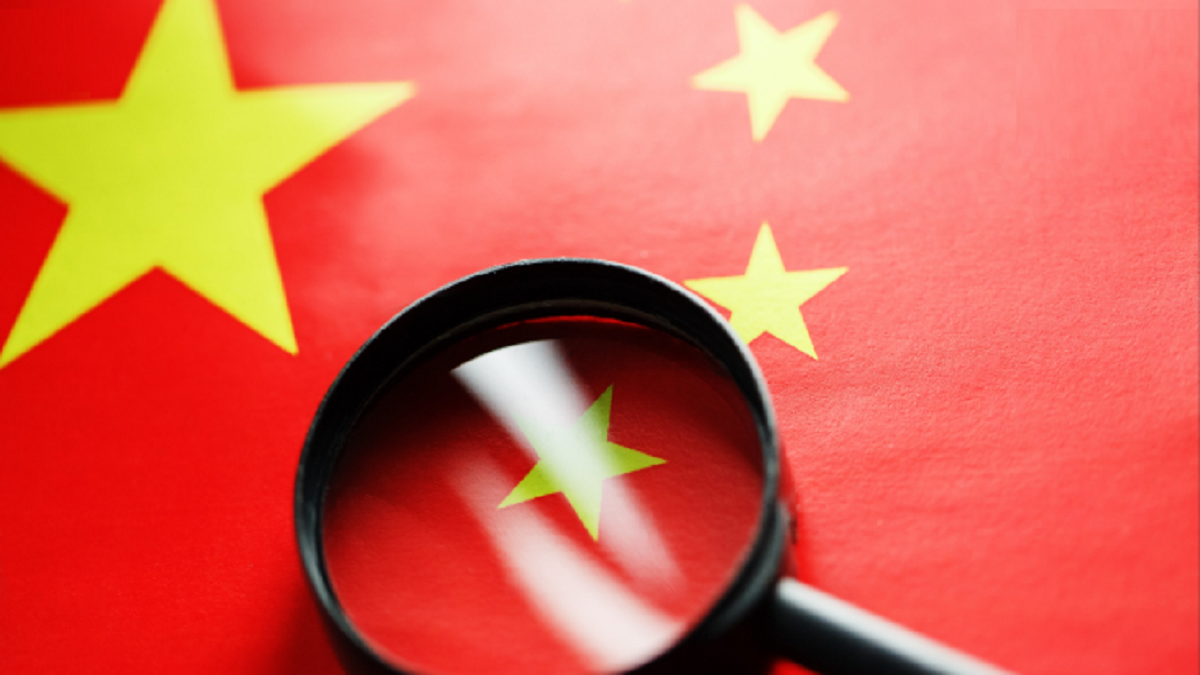China has an interesting association with the international law. After years of rejecting the international law on various reasons such as being prejudiced, the international global order being West-dominated or the treaties being ‘unequal’, China has now adopted a unique approach. It uses the international law whenever it suits them, and rejects it at the times of unfavourable decisions, while paying lip service at other times. In short, it manipulates the international law.
Few examples are in order before we analyse the reasons for this approach. The global rules regarding the oceans and the seas are primarily based on the United Nations Convention for the Law of the Sea (UNCLOS). The convention is also referred to as the Law of the Sea Convention or the Law of the Sea treaty. UNCLOS, as a law of the sea came into operation and became effective from November 16, 1982. UNCLOS is the bedrock of all international nautical laws. Among other aspects, it covers the legal rights of a nation to the Exclusive Economic Zone (EEZ).
China joined the UN in 1971, later negotiated the UNCLOS from 1973 to 1982, and finally ratified the UNCLOS in 1996. China has vague and revisionist claims in the South China Sea, based on a line called the Nine-dash line, which otherwise is devoid of any legal or historical sanctity. Incidentally, even in geometry, dashes do not constitute a line. These recent claims based on the Nine-Dash line have put China in conflict with many countries as China forcibly occupied islands and commenced construction activities, mainly military oriented. This led to a legal dispute, and finally an independent arbitral tribunal established under the UNCLOS published a clear and binding ruling on China’s claims vis-à-vis the Philippines in the South China Sea on July 12, 2016. The tribunal rejected all claims of China, and upheld the rights of Philippines. Predictably, China dismissed the ruling as “nothing more than a piece of waste paper”.
The second example is closer home, moving from the contested seas to the high Himalayas. In 1913 and 1914, the representatives of the Republic of China, Tibet and Great Britain gathered at the Viceregal Lodge in Simla to negotiate a treaty regarding the status of Tibet. This was called the Simla Convention and resulted in a treaty. The draft convention was initialled by all three countries on April 27, 1914. Among other things, the convention with its annexes defined the boundary between Tibet and China proper and that between Tibet and British India, the latter to be known as the McMahon Line, named after British colonial administrator and chief negotiator Sir Henry McMahon who proposed it at the convention.
The British began using the McMahon Line on Survey of India maps in 1937, and the Simla Convention was officially published in 1938. Post-Independence India regarded the McMahon Line as the legal national border, but China rejected the Simla Accord and the McMahon Line, contending that Tibet was not a sovereign state and therefore did not have the power to conclude treaties. This was the beginning of the complex and long-outstanding India-China border dispute.
However, the Chinese stance is selective. The same McMahon Line extended into Burma (now Myanmar), and China has de facto recognised this line with Burma. China settled its outstanding boundary issues with Burma in 1960, and in the Burmese sector of the McMahon Line, the settlement in physical terms is an adoption of the McMohan Line. To put it simply, according to the Chinese, the same line, inherited from the same convention and the same map, is legal with one country and illegal with another. This is because the Chinese intend to keep the border dispute simmering with India, with a larger aim of preventing the growth of a rival nation in power dynamics of Asia.
Another commonly used principle of international law regarding demarcation of land boundaries also comes into play here. The McMahon Line followed the Watershed Principle of map making and, to the extent possible, ran along the highest ridges of these eastern Himalayan ranges. This is the normal principle of division of boundary in the mountains. In the 1960 Sino-Nepalese Treaty of Peace and Friendship, China settled the boundary with Nepal including dividing the Mount Everest by the watershed principle. While Watershed Principle is acceptable with one country (Nepal), but not acceptable with another (India), seems to be the Chinese mantra.
However, no treaty with China is safe and this year China made claims on the Mount Everest as well wherein China Global Television Network (CGTN) Tweeted on May 2, 2020 that “An extraordinary sun halo was spotted Friday in the skies over Mount Qomolangma, also known as Mount Everest, the world’s highest peak located in China’s Tibet Autonomous Region.’’ China has now claimed Mount Everest. This tweet also brings to fore another unique feature of Chinese manipulation – assigning Chinese names to places in other countries. In fact, Chinese expansionism starts with calling the geographical features with chauvinistic names and recognising them as parts of Chinese territory. Resultantly, Mount Everest to the world and Sagarmatha to the Nepalese becomes ‘Mount Qomolangma’, Arunachal Pradesh in India becomes ‘South Tibet’, and the Senkaku Islands of Japan become ‘Diaoyu Islands’ for China.
Let us briefly examine the reasons for such a cavalier and manipulative approach by China towards the international law. The approach is well thought-out and planned, and is based on ‘lawfare’, or short for Chinese legal warfare. Chinese writings often refer to the “Three Warfares” (san zhan) which consist of public opinion warfare, psychological warfare, and legal warfare. Among these three forms of warfares, lawfare is considered to be an offensive weapon capable of hamstringing opponents and seizing the political initiative. According to Chinese thinkers, lawfare raises doubts among adversary and neutral military and civilian authorities, as well as the broader population, about the legality of adversary actions, thereby diminishing political will and support and thereby potentially retarding military activity. Selective acceptance of treaties while denouncing the others as ‘unequal’ is a key part of lawfare.
Terming treaties and conventions as illegal or unequal is another typically Chinese feature. In rest of the world, treaties are the primary legal instruments for governing and regulating relations between the nation states. Legal hawks like me pore and debate over each line, comma and full stop. Later, once a treaty is in force, its provisions are binding between parties and its objectives must be performed in good faith. However, China significantly deviates from the international law by terming some treaties as unequal. The term ‘Unequal treaties’ has been coined by China to refer to a group of treaties through which she was supposedly coerced to concede certain territorial rights to Western powers during the heydays of imperialism. China has a long list of such unequal treaties – Nanking, Whampoa, Aigun and Shimonoseki. Within China, such treaties are linked to the ‘Century of Humiliation’ (1839-1949) and used to whip up public sentiments for nationalistic causes.
Of late, though China has not termed it as an ‘unequal’ yet, China is displaying no or little regard for the Sino-British Joint Declaration, signed in 1984 and aimed at smoothing the transition of Hong Kong when the territory was handed back to China in 1997. The 1984 Declaration stipulated the sovereign and administrative arrangement of Hong Kong after July 1, 1997, when the lease of the New Territories was set to expire, and provided significantly autonomy to Hong Kong. However, China has steadily chipped away the autonomy, and has recently introduced a harsh security law on Hong Kong, which is a serious violation of its treaty with Britain. This draconian security law is in direct conflict with the Hong Kong’s Basic Law (its mini-constitution), and threatens the freedoms and rights protected by the joint declaration. The international community is already regarding Hong Kong as a lost cause.
Digging deeper, the scant regard for the international law by China is not merely a manifestation of lawfare, or an indirect form of warfare. It goes back in the Chinese history, wherein the Chinese emperors and mandarins have always aspired to rewrite the history. The Chinese claims in land and maritime domains essentially flow from its revanchist view of the past. China adopts a careful but shifting standpoint that distorts history, and thereby helps to legitimize claims to the territories long held by other countries.
China is unique in many ways and the law is no exception. The People Liberation Army (PLA) is not an Army of the people or the Chinese government, but of the Communist Party of China. Further, as China does not apply the rule of law at home, it does not recognize its value or sanctity in the international affairs. The Chinese citizens have hardly any political and economic rights. Enforcing business claims are a nightmare in China. Arbitration is complex. Shifting the capital out of China is practically impossible. Human rights are another joke in China, as exemplified by the massive detention of helpless Uighurs in Xinjiang, or the continued oppression of the Tibetans. Therefore, to expect China to adhere to the international law is unrealistic.
International laws and treaties are just a piece of paper for the Chinese, only helping them to ‘Hide your strength, bide your time’ till an appropriate time, when they shall be discarded. Nevertheless, the international laws like UNCLOS are a cornerstone of international peace and security, providing a neutral mechanism to allocate the world’s maritime resources. There are persistent efforts by China to overturn such established laws, deploying military might to negate the legal (and inalienable) rights given to the relatively smaller countries. These unilateral actions by China do not bode well for the international peace, security and the rule of law. As China grows in military and economic might, among others, the law is a victim.
The author is a lawyer at the Supreme Court of India.
International laws and treaties are just a piece of paper for the Chinese, only helping them to ‘hide your strength, bide your time’ till an appropriate time, when they shall be discarded. Nevertheless, the international laws like UNCLOS are a cornerstone of international peace and security, providing a neutral mechanism to allocate the world’s maritime resources. There are persistent efforts by China to overturn such established laws, deploying military might to negate the legal (and inalienable) rights given to the relatively smaller countries.























